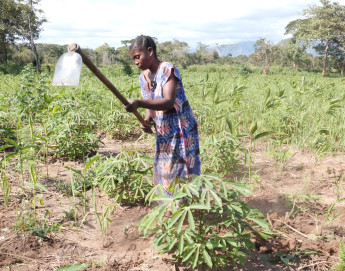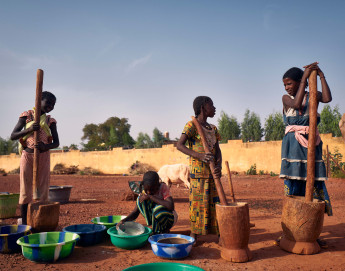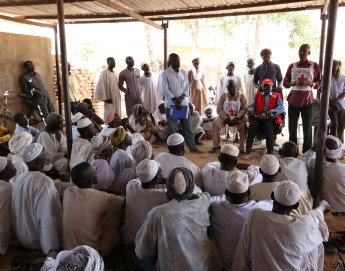
Food Security and Armed Conflict
According to the Global Report on Food Crises, armed conflict and other threats to security pushed 139 million people into acute food insecurity in 2021 – an increase of almost 40 million people compared to the year before. Other major drivers of food insecurity included economic shocks (pushing 30 million into crisis) and weather extremes (an additional 23 million). In 2022, the situation has worsened further as the impacts of the armed conflict in Ukraine are felt across the globe.
These drivers – armed conflict, and economic, political and environmental factors – should not be seen as isolated; rather they are mutually reinforcing and often cyclical in nature: over time they erode people's resilience and coping strategies, with severe humanitarian consequences. The data are nevertheless clear that armed conflict and other threats to security are the most significant drivers, directly and indirectly affecting food security not only where the fighting takes place but often also in neighbouring countries and beyond. And indeed, more can and must be done to mitigate the impacts of conflict on food security.
Based on its experience in conflict settings, in a newly released policy brief the ICRC recommends three main actions for states, donors, humanitarian and development organizations, and others who have a role to play in addressing this urgent issue.
These actions require a multidisciplinary approach that addresses both systemic issues and individual needs in the short-, medium- and long-term.

The way a conflict is fought can both directly and indirectly impact food security. When crops, agricultural land, or critical infrastructure are damaged or destroyed by fighting, for example, it can have an immediate impact on people's access to food. But broader impacts, such as the closure of trade routes and collapse of local markets due to insecurity, even far from where the fighting takes place, can be further damaging. IHL prohibits starvation of civilians as a method of warfare and gives protection to objects necessary to produce food and drinking water. Respect for these and other rules of IHL can help mitigate the impacts of armed conflict on food security.

This means building a strong understanding of what food systems the country or community relies on, where the weak points are, who is in an influential position, how the systems are connected to the wider region and the rest of the world, and how armed conflict (there or elsewhere) is likely to disrupt them. This analysis can be used to prepare rapid response plans and/or coordinate anticipatory action to reinforce weak points in the systems and compensate for structural deficiencies.

This requires in-depth knowledge of the evolving threats and challenges that diverse groups in the population face and their coping strategies. It also requires the ability to reach these segments of the population, provide them with individualized and well-timed support in response to their needs, and strengthen their positive coping mechanisms. This is best done through partnerships and collaboration that reinforce existing support structures and leverage the comparative advantages of the many organizations and entities present in any humanitarian crisis.




